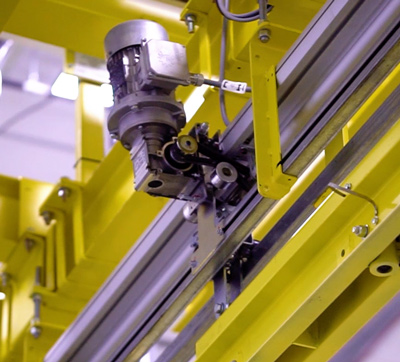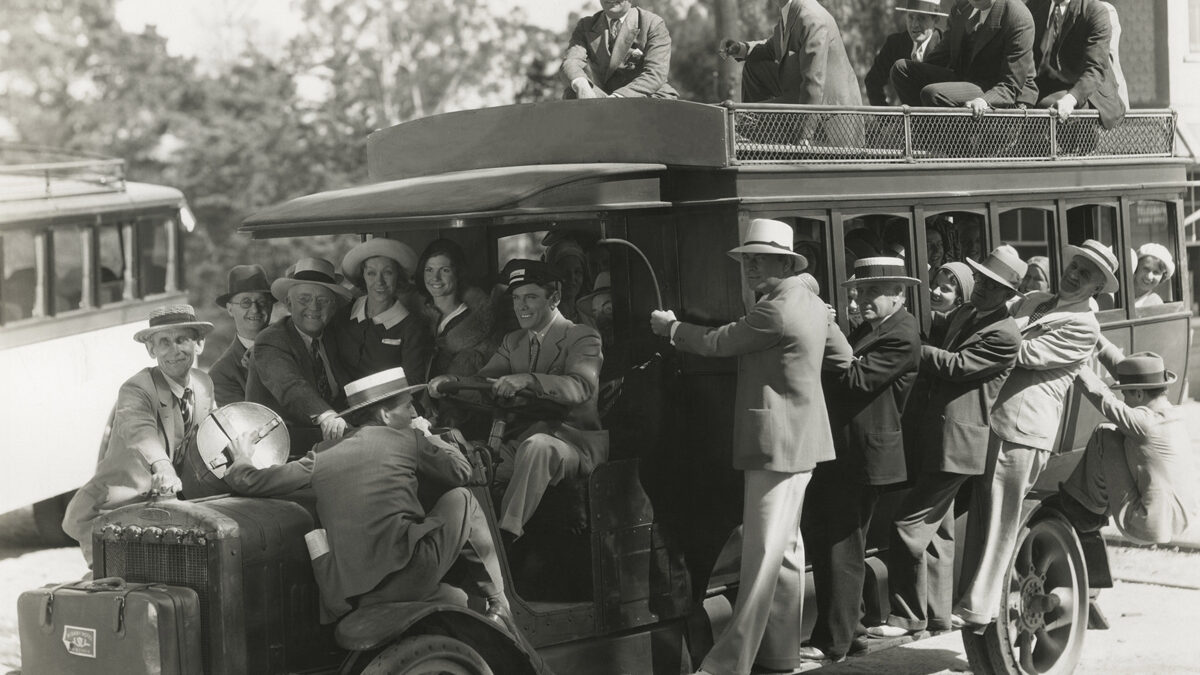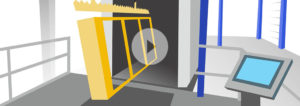Are you employing an outdated technique in moving parts throughout your automated finishing process?
Daisy chaining parts, when products are suspended from hooks, can cause swaying of parts, particularly as the parts move through turns, stop or start, or change elevation. That sway can also be initiated by workers who are trying to “catch the moving line” when dealing with chain-based, conveyorized, overhead finishing systems.
In power and free systems, sway can also be introduced when part carriers abruptly stop in place or switch from one chain track to another, particularly if those tracks are traveling at different speeds.
Swaying parts in the process of finishing parts adds up to lost dollars, because it forces parts to maintain greater clearances from each other as they travel through the system to avoid crashing into one another or, worst-case, falling off the line. Crashing into each other can certainly mar the finish, if not the part itself! Falling off the line is also very problematic!
There’s a better way to decrease sway in chain systems and increase part density.
Variable Frequency Drive Controlled Carriers Bring Measurable Benefits
 With an IntelliFinishing system, part sway is greatly reduced via the use of variable frequency drive, or VFD, control.
With an IntelliFinishing system, part sway is greatly reduced via the use of variable frequency drive, or VFD, control.
In these systems, the speed of each carrier on a section of track is independently controlled by a small motor that is VFD controlled. This VFD allows carriers to smoothly accelerate and decelerate, reducing the inertial forces that lead to excessive swaying of parts.
An IntelliFinishing system also allows parts to stop for load, unload, masking, blow off, or yes, even the finishing processes. Carriers can also speed up or slow down as may be needed or required per section of track. For example, in a non-process section of track carriers may move at speeds as high as 40 to 65 feet per minute (considerably faster than the fixed line speeds of most chain conveyors), but then slow down to under 10 fpm for a wash process or as they enter an automated finishing booth. The carriers might also index forward in an oven, as another example, in order to achieve a specific amount of time in that oven while other carriers in the oven have other time allotments for drying off or curing.
Racking Method Significantly Effects Productivity
Many users of IntelliFinishing systems choose to preload parts on removable loadbars and then hang the entire loadbar on the system from a carrier that is stopped in place. This avoids having loaders chasing after a moving chain to load the parts. After load, the carrier moves at a variable speed (basically as fast as possible) to the next step or to catch up to the carrier in front that may be waiting it’s turn in the wash or shotblast.
As a result, and especially when combined with more solid frame racking, many more parts can be hung in the same processing part window for an IntelliFinishing system.
 For most systems, it takes the same amount of wash spray and time in the oven or booth to process a dense set of parts hung on a carrier compared to a lightly loaded carrier. This means that, when you can get greater part density, you can boost production without decreasing efficiency, which translates to heightened productivity. For a recent client, we were able to calculate a 20% increase in throughput per hour, simply by assuming the capacity to increase the density of parts on an IntelliFinishing System compared to traditional finishing system carrier loads.
For most systems, it takes the same amount of wash spray and time in the oven or booth to process a dense set of parts hung on a carrier compared to a lightly loaded carrier. This means that, when you can get greater part density, you can boost production without decreasing efficiency, which translates to heightened productivity. For a recent client, we were able to calculate a 20% increase in throughput per hour, simply by assuming the capacity to increase the density of parts on an IntelliFinishing System compared to traditional finishing system carrier loads.
The racking system is also a key inflection point on the journey to greater efficiency, and it’s common to question which might be right for your needs. While that will ultimately depend on the parts, in general, racking that locks a part in place is better to minimize part sway, no matter whose conveyor you use.
Of course, in powder coating, grounding through the racking is an important consideration. In this case, racking that has clean connections to the carrier or loadbar will transfer ground best and thus insure a better finish with less powder waste.
Contact IntelliFinishing Today
IntelliFinishing systems are designed with one purpose – bringing you greater efficiency in your part finishing. Leveraging VFD control to reduce part sway and boost part density is only one of the tools we have in achieving that mission.
To learn more, contact us today.
Related posts
Search this blog
Get email updates
Archives
- April 2024
- August 2023
- May 2023
- April 2023
- March 2023
- June 2022
- May 2022
- April 2022
- November 2021
- October 2021
- September 2021
- April 2021
- March 2021
- January 2021
- October 2020
- August 2020
- June 2020
- May 2020
- February 2020
- January 2020
- December 2019
- October 2019
- September 2019
- June 2019
- May 2019
- March 2019
- February 2019
- October 2018
- September 2018
- August 2018
- July 2018
- June 2018
- May 2018
- April 2018
- March 2018
- July 2017
- June 2017
- May 2017
- April 2017
- March 2017
- February 2017
- December 2016
- June 2016
- May 2016
- April 2016
- February 2016
- January 2016
- September 2015
- June 2015
- March 2015
- February 2015
- January 2015
- December 2014
- November 2014
- August 2014
- June 2014
- May 2014
- April 2014
- August 2013
- July 2013
- March 2013
- October 2012
- September 2012
- March 2011
- February 2011
- January 2011
- October 2010


